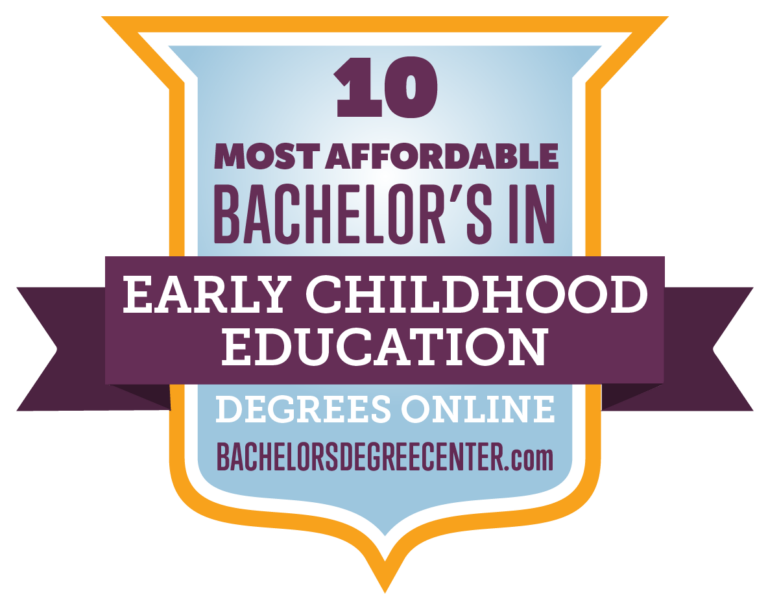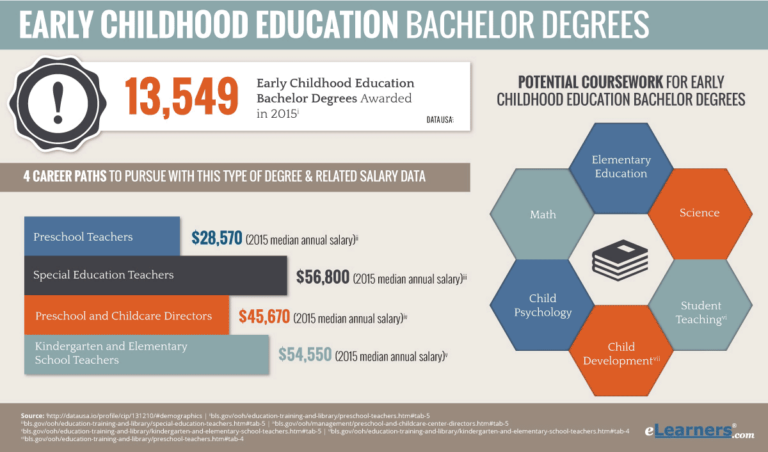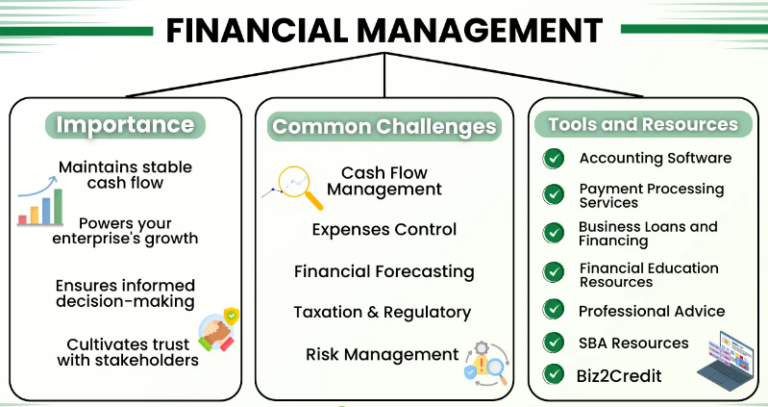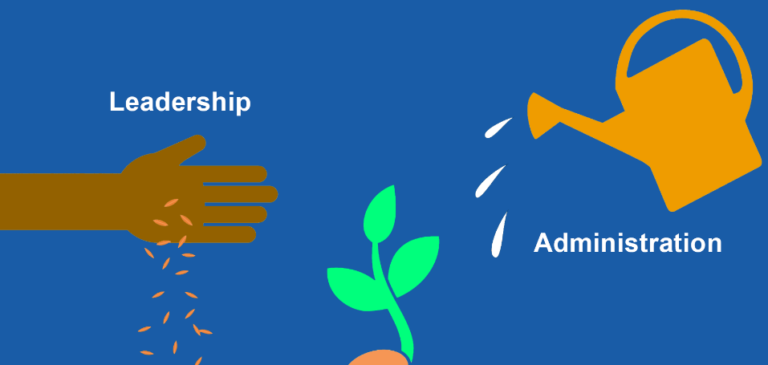Masters Degree In Education programs offer a transformative journey for aspiring educators and seasoned professionals alike. These programs delve deep into pedagogical approaches, educational research, and the complexities of diverse learning environments. Whether you’re aiming for a career shift, seeking advancement in your current role, or driven by a passion for educational reform, a Master’s in Education can equip you with the skills and knowledge to make a real difference.
This exploration will cover various aspects of pursuing a Masters Degree in Education, from program structures and career paths to funding options and the admission process. We’ll examine different specializations, compare online and on-campus learning, and showcase the impact graduates have on K-12 systems. We’ll also look at the role of research and innovative teaching methods in shaping the future of education.
Program Overview
A Master’s Degree in Education (MEd) is a postgraduate program designed to enhance the knowledge and skills of educators, preparing them for leadership roles and advanced practice in various educational settings. These programs cater to a wide range of professionals, from experienced teachers seeking career advancement to individuals transitioning into the field of education. The curriculum is rigorous and focuses on both theoretical and practical applications of educational principles.A typical MEd curriculum includes coursework in educational psychology, curriculum development, assessment and evaluation, educational research methodologies, and leadership and administration.
The specific courses will, of course, vary depending on the specialization chosen and the university offering the program. Many programs also incorporate fieldwork, internships, or practicums, providing students with hands-on experience in real-world educational settings.
Specializations in Master’s in Education
Master’s in Education programs offer a variety of specializations allowing students to tailor their studies to their specific career goals and interests. Some common specializations include curriculum and instruction, educational leadership and administration, special education, higher education administration, and counseling. These specializations provide focused training in specific areas of education, equipping graduates with the expertise needed to excel in their chosen field.
For example, a specialization in special education might include coursework on inclusive practices, individualized education programs (IEPs), and working with students with diverse learning needs. A specialization in educational leadership might focus on school improvement, strategic planning, and managing diverse school populations.
Online vs. On-Campus Master’s in Education Programs
Choosing between an online and on-campus MEd program depends largely on individual circumstances and learning preferences. On-campus programs offer the benefits of face-to-face interaction with professors and peers, creating a collaborative learning environment. Networking opportunities are often more readily available in on-campus settings. However, on-campus programs require greater flexibility in terms of scheduling and location. Online programs, conversely, offer flexibility and accessibility, allowing students to study at their own pace and from anywhere with an internet connection.
This is particularly beneficial for working professionals or those with family commitments. However, online programs may lack the same level of direct interaction and may require greater self-discipline. Both formats, however, generally aim for similar learning outcomes.
Admission Requirements for Master’s in Education Programs
Admission requirements for MEd programs vary across universities but generally include a bachelor’s degree, transcripts, letters of recommendation, and a statement of purpose. Some programs may also require standardized test scores such as the GRE or GMAT, although this is becoming less common. Below is a comparison of admission requirements from several prominent universities (note that these requirements are subject to change and should be verified directly with the universities):
| University | Bachelor’s Degree | GPA | Other Requirements |
|---|---|---|---|
| University A | Required | 3.0 or higher | Letters of Recommendation, Statement of Purpose |
| University B | Required (in related field preferred) | 3.2 or higher | GRE scores (optional), Letters of Recommendation, Statement of Purpose, Resume |
| University C | Required | 2.75 or higher | Teaching experience preferred, Letters of Recommendation, Statement of Purpose |
| University D | Required | 3.5 or higher | GRE scores (optional), Letters of Recommendation, Statement of Purpose, Writing Sample |
Career Paths & Job Prospects

A Master’s in Education (M.Ed.) opens doors to a diverse range of fulfilling and impactful careers within the education sector and beyond. The specific career path and salary expectations will depend on the chosen specialization within the M.Ed. program and the individual’s experience and skills. However, an M.Ed. generally provides a significant advantage in the job market, leading to increased earning potential and career advancement opportunities.Graduates with an M.Ed.
are highly sought after for their advanced knowledge and expertise in educational theory and practice. This translates to numerous career options, offering both stability and the chance to make a meaningful difference in the lives of students and educators.
Career Opportunities for M.Ed. Graduates
A Master’s in Education equips individuals with the skills and knowledge to pursue various roles. These roles often involve leadership, curriculum development, instruction, and educational research. Some common career paths include: Educational leadership positions (principal, superintendent, curriculum director), Post-secondary education roles (professor, instructor, advisor), Instructional design and development roles (creating educational materials and online courses), Special education teacher roles, School counselor roles, Educational consultant roles (providing expertise to schools and organizations), and Research and evaluation roles (analyzing educational data and programs).
The specific opportunities available will also be influenced by the chosen specialization during the M.Ed. program. For example, a specialization in curriculum and instruction would make one a strong candidate for curriculum development positions, while a specialization in special education opens doors to roles working directly with students with special needs.
Salary Expectations
Salary expectations for M.Ed. graduates vary considerably depending on the specific role, location, experience level, and the educational institution or organization. However, generally speaking, those with an M.Ed. command higher salaries than those with only a bachelor’s degree in education. For example, a newly qualified principal with an M.Ed.
might earn significantly more than a classroom teacher with only a bachelor’s degree. Similarly, a professor at a university with an M.Ed. and significant research experience would likely have a higher salary than a lecturer with only a bachelor’s degree. While precise figures are difficult to provide due to these variables, salary data from sources like the Bureau of Labor Statistics (BLS) and Glassdoor can offer helpful benchmarks.
It’s important to research specific roles and locations for more accurate salary expectations. For instance, a principal in a large urban school district may earn considerably more than a principal in a smaller rural district.
Valuable Skills and Competencies
The M.Ed. program cultivates a range of skills and competencies highly valued in the job market. These include advanced knowledge of educational theory and research, curriculum design and development expertise, effective teaching and instructional strategies, assessment and evaluation techniques, leadership and management skills, data analysis and interpretation abilities, communication and collaboration skills, and the ability to adapt to changing educational environments.
These skills are transferable and applicable across various educational settings and roles, enhancing the employability of M.Ed. graduates. For example, strong communication and collaboration skills developed during the M.Ed. program are valuable not only in teaching but also in leadership and administrative positions.
Successful Career Transitions
Many individuals have successfully transitioned their careers using their M.Ed. For example, a classroom teacher with an M.Ed. might move into a curriculum coordinator role, leveraging their teaching experience and advanced knowledge of curriculum design. Similarly, someone with a background in a different field might pursue an M.Ed. to transition into education, potentially becoming a school counselor or special education teacher.
The flexibility and adaptability fostered by the M.Ed. allows for a diverse range of career paths and transitions, making it a valuable investment in professional development. One example might be a former business manager who, after earning an M.Ed., transitioned to a role as a school administrator, effectively applying their business acumen to educational leadership.
Program Costs & Funding
Pursuing a Master’s in Education is a significant investment, both in time and money. Understanding the associated costs and available funding options is crucial for prospective students to make informed decisions and plan their finances effectively. This section details the typical expenses involved and Artikels various avenues for financial assistance.The average cost of a Master’s in Education program varies considerably depending on several factors, including the institution’s location, program type (full-time versus part-time), and the length of the program.
Tuition fees are a major component, often ranging from $10,000 to $60,000 or more for the entire program. Beyond tuition, consider additional expenses such as books and supplies, living costs (housing, food, transportation), and potential fees for application processing, technology, and other program-related activities. A realistic budget should encompass all these elements.
Tuition Fees and Other Expenses
Tuition fees are the most significant cost associated with a Master’s in Education. The cost can vary dramatically between public and private institutions, with private universities generally charging higher tuition rates. For instance, a public university in a state with low tuition rates might charge around $10,000-$20,000 for a two-year program, while a private university in a major metropolitan area could charge $40,000-$60,000 or more for the same duration.
Beyond tuition, students should factor in the cost of textbooks, which can range from $500 to $1500 per year, and other program-related expenses like technology fees or lab fees, if applicable. Living expenses, including rent, utilities, groceries, and transportation, also need to be considered, and these vary greatly based on location. For example, living in a major city will typically be significantly more expensive than living in a smaller town.
Financial Aid Options and Scholarships
Securing funding is often a critical aspect of pursuing a Master’s degree. Many institutions offer a range of financial aid options, including grants, scholarships, and assistantships. Grants are generally need-based, meaning eligibility is determined by the student’s financial circumstances. Scholarships, on the other hand, are often merit-based, awarded to students who demonstrate academic excellence or possess specific skills or qualities.
Assistantships, which often involve teaching or research work within the university, can provide both financial support and valuable professional experience. Many external organizations also offer scholarships specifically for students pursuing education-related fields. These scholarships can range in amount and have varying eligibility criteria. It’s advisable to research extensively and apply to multiple scholarships to maximize chances of securing funding.
Applying for Student Loans
Student loans can bridge the gap between available funds and the total cost of education. Several federal and private loan programs are available to graduate students. Federal loans often have lower interest rates and more flexible repayment options than private loans, but their availability depends on credit history and financial need. Private loans are generally available to students with a good credit history, but often come with higher interest rates and less favorable terms.
The application process typically involves completing a Free Application for Federal Student Aid (FAFSA) form for federal loans, and submitting a separate application to the chosen private lender for private loans. It’s essential to carefully compare interest rates, repayment terms, and fees from various lenders before committing to a loan. Understanding the total cost of borrowing, including interest, is crucial to avoid overwhelming debt after graduation.
Funding Sources
- Federal Student Loans: These loans offer lower interest rates and flexible repayment plans. Eligibility is determined based on financial need and credit history (for some loan types).
- Private Student Loans: These loans may have higher interest rates than federal loans, but they can be a viable option for students who don’t qualify for federal aid or need additional funding.
- Grants: Need-based financial aid provided by the university or government agencies.
- Scholarships: Merit-based awards offered by universities, professional organizations, or private foundations.
- Assistantships: Financial aid in exchange for part-time work within the university (teaching, research, etc.).
- Employer Tuition Reimbursement: Some employers offer tuition reimbursement programs to employees pursuing further education.
Admission Process & Requirements
Gaining admission to a Master’s in Education program typically involves a competitive application process. Universities assess candidates based on a range of factors, ensuring they possess the necessary academic background, experience, and potential to succeed in the demanding program. Understanding the specific requirements and navigating the application steps effectively is crucial for a successful outcome.The application process generally involves submitting a completed application form, official transcripts, letters of recommendation, a statement of purpose, and potentially standardized test scores.
Specific requirements can vary between universities and even between different specializations within a single university’s education program. It’s essential to thoroughly review the admission requirements Artikeld on the university’s website for the program you are interested in.
Application Documents and Qualifications
Applicants typically need to submit several key documents. These include official transcripts from all previously attended colleges and universities, demonstrating a strong undergraduate academic record. A minimum GPA is usually required, often around a 3.0 or higher, although this can vary depending on the program’s selectivity and the applicant’s overall profile. Furthermore, most programs require letters of recommendation from individuals who can attest to the applicant’s academic abilities, professional experience, and personal qualities.
These recommendations provide valuable insights into the applicant’s suitability for graduate-level study. Finally, a well-written statement of purpose is crucial, allowing applicants to articulate their educational goals, relevant experiences, and reasons for pursuing a Master’s in Education at that particular institution.
The Role of Standardized Tests in Admission
Many Master’s in Education programs require applicants to submit scores from standardized tests, most commonly the GRE (Graduate Record Examinations). The GRE is a standardized test designed to measure verbal reasoning, quantitative reasoning, and analytical writing skills. While not all programs require the GRE, those that do often use the scores as one factor among many in the holistic review of an applicant’s qualifications.
A strong GRE score can enhance an application, particularly if other aspects of the application, such as GPA, are not exceptionally high. However, a low GRE score does not automatically disqualify an applicant, as the admissions committee considers the application holistically, taking into account the applicant’s entire profile. Some universities may waive the GRE requirement for applicants with extensive relevant professional experience or exceptional academic records.
It is vital to check the specific requirements of each program to determine if the GRE is necessary.
Step-by-Step Application Guide
Applying to a Master’s in Education program can be streamlined by following a structured approach.
- Research Programs: Identify programs that align with your interests and career goals. Consider factors such as program reputation, faculty expertise, curriculum, and location.
- Check Admission Requirements: Carefully review the specific admission requirements for each program you are interested in. Pay close attention to deadlines, required documents, and any standardized test requirements.
- Prepare Application Materials: Gather all necessary documents, including transcripts, letters of recommendation, and your statement of purpose. Ensure all documents are complete and accurately reflect your qualifications and experiences.
- Take Standardized Tests (if required): If the GRE or other standardized tests are required, register for the exam and aim to achieve a competitive score.
- Submit Your Application: Complete and submit your application online through the university’s application portal. Double-check all information for accuracy before submitting.
- Follow Up: After submitting your application, follow up with the admissions office if you have any questions or concerns. Check the status of your application regularly.
Curriculum & Pedagogical Approaches
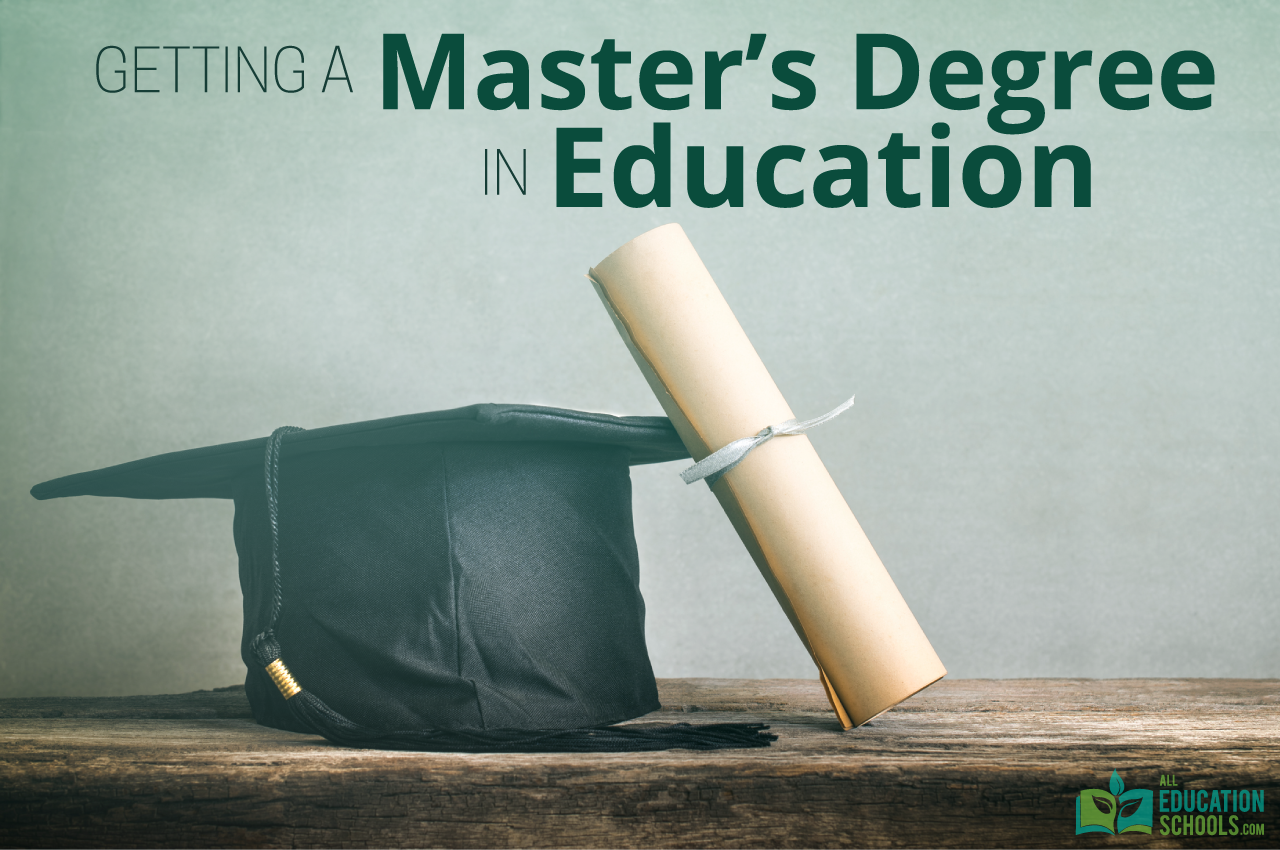
A Master’s in Education program doesn’t just equip you with theoretical knowledge; it immerses you in a diverse range of pedagogical approaches, preparing you to adapt your teaching style to various learning environments and student needs. The curriculum typically explores both traditional and contemporary methods, allowing for a nuanced understanding of how different approaches impact student learning outcomes.Different pedagogical approaches emphasize different aspects of the learning process.
For instance, constructivist approaches focus on student-centered learning, where students actively construct their knowledge through experience and collaboration. Conversely, direct instruction emphasizes teacher-led, explicit teaching of concepts and skills. Behaviorist approaches, while less prominent in modern curricula, still inform classroom management techniques through reinforcement and reward systems. Understanding these diverse approaches and their underlying philosophies is crucial for effective teaching.
Comparison of Pedagogical Approaches
A Master’s program will typically compare and contrast several key pedagogical approaches. Constructivism, for example, prioritizes active learning, problem-solving, and collaborative activities. Students aren’t simply passive recipients of information but active participants in knowledge creation. In contrast, direct instruction emphasizes clear explanations, modeling, and guided practice, offering a structured and efficient way to deliver information, particularly for foundational concepts.
Social constructivism extends constructivist principles by highlighting the role of social interaction and collaboration in knowledge construction. Students learn from each other through discussions, group projects, and peer teaching. Finally, inquiry-based learning empowers students to drive their learning by formulating their questions and seeking answers through investigation and experimentation. Each approach offers unique strengths and weaknesses, making adaptability key for effective educators.
Sample Lesson Plan: Inquiry-Based Learning
This lesson plan for a 5th-grade science class on the water cycle uses an inquiry-based approach. Learning Objective: Students will be able to describe the processes of evaporation, condensation, and precipitation, and explain their role in the water cycle. Materials: Pictures of the water cycle, various containers (cups, bowls, jars), water, ice, heat source (hot plate or sun), plastic wrap.
Procedure:
1. Engage
Begin with a captivating video or images depicting extreme weather events related to the water cycle (floods, droughts). Ask students what they already know about water and its movement.
2. Explore
Divide students into small groups and provide them with materials. Guide them to design their own experiments to investigate different aspects of the water cycle (e.g., evaporation using a heated container, condensation using a cold container covered in plastic wrap).
3. Explain
After experimentation, lead a class discussion, allowing students to share their observations and conclusions. Introduce key vocabulary (evaporation, condensation, precipitation) and clarify misconceptions.
4. Elaborate
Students create visual representations of the water cycle, incorporating their experimental findings.
5. Evaluate
Students answer questions about the water cycle, demonstrating their understanding of the processes involved.
Technology Integration in Master’s Education Programs
Technology integration is not just an add-on; it’s woven into the fabric of modern Master’s in Education programs. Students learn to utilize various educational technologies, including learning management systems (LMS) like Canvas or Moodle, digital assessment tools, and interactive simulations. The curriculum emphasizes digital literacy, data analysis for educational purposes, and the ethical considerations of using technology in the classroom.
For example, students might learn to use educational software to create personalized learning experiences or utilize data analytics from LMS platforms to inform their instructional decisions.
Application of Educational Theories in Practice
Master’s programs bridge the gap between theory and practice. Students apply educational theories, such as Vygotsky’s sociocultural theory (emphasizing the role of social interaction in learning) or Bloom’s taxonomy (classifying cognitive skills), in practical classroom settings through fieldwork, internships, or simulated teaching experiences. For example, a student might design a lesson plan based on constructivist principles, then implement and evaluate its effectiveness in a real or simulated classroom, analyzing student engagement and learning outcomes in relation to the theoretical framework.
This practical application solidifies theoretical understanding and prepares students for the challenges of real-world teaching.
Impact on Educational Systems
A Master’s degree in Education significantly impacts K-12 educational systems by equipping graduates with advanced knowledge, skills, and research capabilities to address diverse educational challenges and improve student outcomes. These graduates often become leaders in educational reform, driving innovation and influencing policy at various levels, from individual classrooms to entire school districts.Graduates equipped with advanced pedagogical knowledge and research skills contribute to the improvement of teaching practices, curriculum development, and school administration.
Their influence extends to creating more inclusive and equitable learning environments for all students. This impact is measurable through improved student achievement, increased teacher effectiveness, and the implementation of innovative educational programs.
Innovative Teaching Methods Implemented by Graduates
Master’s in Education graduates frequently introduce innovative teaching methods into their classrooms. For instance, a graduate specializing in technology integration might implement project-based learning utilizing digital tools, fostering collaboration and critical thinking skills among students. Another might incorporate differentiated instruction strategies, tailoring their teaching approach to meet the diverse learning needs of individual students within a classroom. These approaches often lead to demonstrably improved student engagement and academic performance, as evidenced by increased test scores or project completion rates.
A focus on inquiry-based learning, where students actively construct their knowledge through exploration and investigation, is also a common outcome of these programs.
Contribution to Educational Reform Initiatives, Masters Degree In Education
Master’s in Education programs actively contribute to educational reform initiatives by producing graduates who are well-versed in current educational research and best practices. For example, graduates might spearhead initiatives to improve literacy rates by implementing evidence-based reading interventions. Others may focus on improving school climate and fostering positive relationships between teachers and students. The research and practical experience gained during their master’s program empowers them to lead such reform efforts, advocating for change at local, state, or even national levels.
Successful implementation of these initiatives often leads to improved student well-being, increased graduation rates, and higher levels of college readiness.
Examples of Research Projects Undertaken by Students
Many Master’s in Education programs require students to complete a research project or thesis. These projects often address pressing issues within the educational system. For example, a student might investigate the effectiveness of a particular teaching method in improving math skills among underperforming students. Another might conduct a study on the impact of school funding on student achievement. The findings from these research projects can inform educational policies and practices, leading to evidence-based improvements in teaching and learning.
A study analyzing the impact of different classroom management techniques on student behavior, for instance, could offer valuable insights for educators seeking to create a more positive and productive learning environment. Such research directly contributes to a more data-driven approach to education, allowing for continuous improvement and adaptation.
Illustrative Examples of Educational Research: Masters Degree In Education
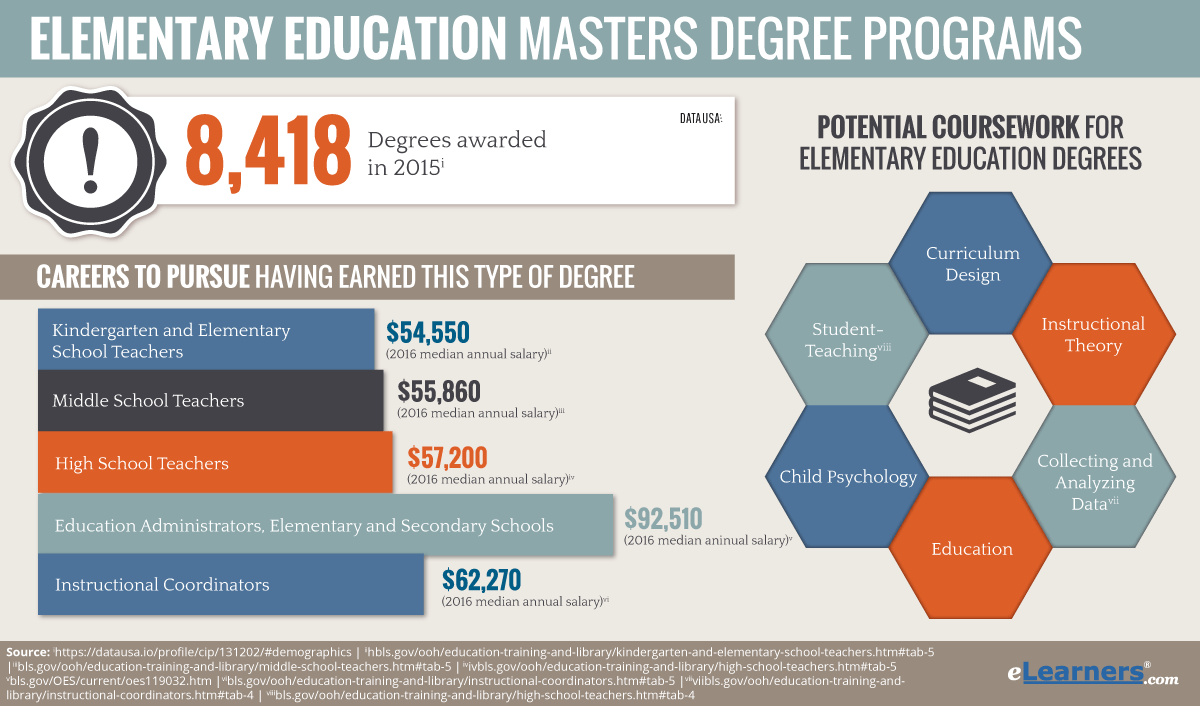
This section provides examples of educational research studies, a successful intervention, and the effective use of educational technology, showcasing the diverse methodologies and impactful applications within the field. These examples highlight the practical implications of research and its contribution to improving educational outcomes.
A Research Study on the Effects of Early Childhood Education on Later Academic Achievement
This study investigated the long-term impact of participation in high-quality early childhood education programs on children’s academic achievement in elementary school. Researchers used a quasi-experimental design, comparing the academic performance of children who attended a pre-kindergarten program (intervention group) with children who did not (control group). Data was collected through standardized achievement tests administered at the end of kindergarten and first grade.
The methodology included controlling for pre-existing socioeconomic factors and cognitive abilities using statistical regression analysis. Findings indicated a statistically significant positive relationship between participation in the pre-kindergarten program and higher scores on standardized tests in both kindergarten and first grade. This suggests that high-quality early childhood education can have a lasting positive impact on children’s academic trajectory.
Case Study: Implementing a Collaborative Learning Intervention in a High School
This case study details the implementation of a collaborative learning intervention in a high school’s history classes. The intervention involved restructuring the classroom to facilitate group work, providing students with explicit instruction in collaborative skills (e.g., active listening, constructive feedback), and designing tasks that required students to work together to achieve a common goal. Data was collected through student surveys, teacher observations, and analysis of student work. The intervention resulted in improved student engagement, increased collaboration skills, and higher scores on assessments that required collaborative problem-solving. However, challenges included managing student dynamics within groups, ensuring equitable participation, and adapting the approach to diverse learning styles. The initial implementation required significant teacher training and ongoing support to effectively manage the transition to a more collaborative learning environment. Over time, teacher confidence increased, and the benefits of collaborative learning became more evident in student performance and attitudes. The challenges highlighted the importance of providing teachers with adequate training, resources, and ongoing support when implementing significant pedagogical changes.
Effective Implementation of Educational Technology: Using Interactive Whiteboards in Science Class
Interactive whiteboards (IWBs) were implemented in a fifth-grade science classroom to enhance student engagement and understanding of complex scientific concepts. The teacher utilized the IWB to present interactive simulations, incorporate multimedia resources (videos, images), and facilitate collaborative activities. Pre- and post-tests were administered to assess student learning, and teacher observations documented student engagement and participation. The results showed a statistically significant improvement in student test scores and a marked increase in student engagement during science lessons.
The IWB provided opportunities for students to actively participate in the learning process, receiving immediate feedback and exploring concepts in an engaging manner. Challenges included ensuring all students had equal access to the technology and providing adequate training for the teacher on effectively utilizing the IWB’s features. The successful implementation demonstrated the potential of IWBs to transform the science classroom, provided the technology is appropriately integrated into the curriculum and supported by teacher training and ongoing professional development.
Last Recap
Ultimately, a Masters Degree in Education is an investment in both your personal and professional growth, and a commitment to positively influencing the lives of students. The journey may be challenging, but the rewards – in terms of career opportunities, personal fulfillment, and contribution to the broader educational landscape – are immense. By carefully considering your career goals, exploring program options, and understanding the financial implications, you can embark on this path with confidence and purpose.
Questions and Answers
What is the average time commitment for a Masters in Education?
Most programs take 1-2 years to complete, depending on the program structure (full-time or part-time) and the number of credits required.
Are there any prerequisites for applying to a Masters in Education program?
Generally, a Bachelor’s degree is required. Specific prerequisites may vary depending on the university and specialization, sometimes including a minimum GPA and relevant coursework.
What types of teaching positions can I get with a Masters in Education?
A Master’s opens doors to roles like curriculum developer, instructional coach, school administrator, special education teacher, and higher education instructor, among others.
Can I use my Masters in Education to advance in my current role?
Absolutely. A Master’s degree often leads to promotions and increased responsibilities within existing educational settings. It demonstrates a commitment to professional development and enhances your expertise.

